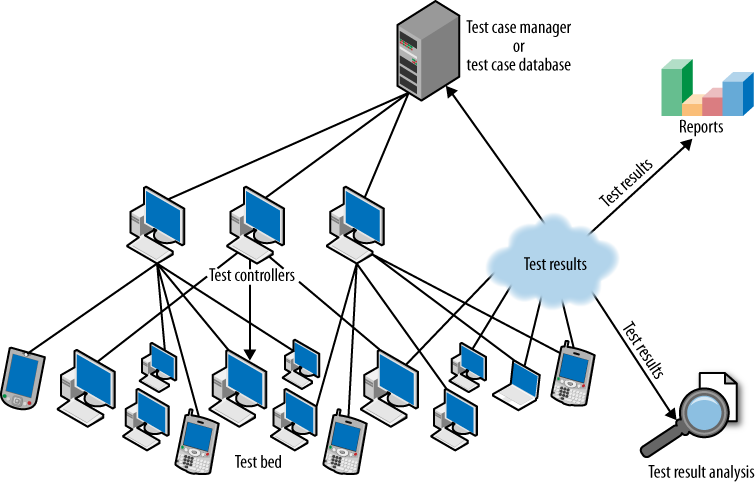Putting It All Together
Once the whole package is together, test automation truly begins to become a benefit to testing. Testers can focus on one thing only: writing fantastic automated tests. These are tests that donât require constant maintenance, and tests that always generate meaningful actionable results. Figure 8-4 shows one description of the entire automation system described here.

Figure 8-4. Large-scale test automation
Of course, if your automation system isnât at this level of maturity, you shouldnât expect it to get there instantly. The implementation of the details, as well as the relevant cultural changes, wonât happen overnight. As with any large-scale change, changing and growing a little at a time is the best approach to turn an inefficient system into a beautiful one. Start by writing better tests; poor test automation is one of the biggest obstacles to automation success. Also make sure that test scripts and code are part of a source control system, and that tests go through some sort of continuous integration process to ensure some level of test quality and consistency.
Then, set up a test lab for running automated tests. Start working out a way to distribute tests to these machines and execute the tests. Then, begin gathering and aggregating simple high-level test results. Next, find a way to log test failures in the bug database. After that, investigate ...
Get Beautiful Testing now with the O’Reilly learning platform.
O’Reilly members experience books, live events, courses curated by job role, and more from O’Reilly and nearly 200 top publishers.

